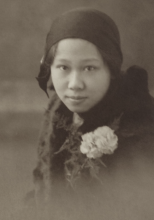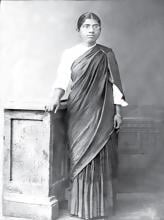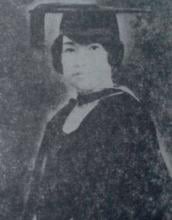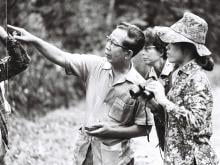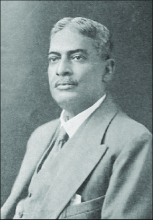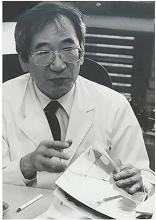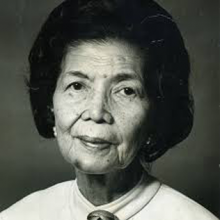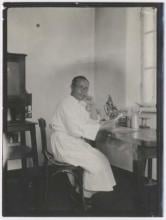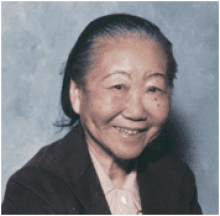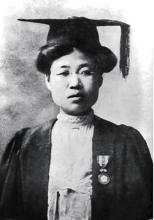Medicine
News

18 Feb 2007
Summaries of newsworthy papers include Making room for others, Abnormal cell migration and Splicing out of control

15 Feb 2007
Nature Publishing Group (NPG) and AstraZeneca are delighted to announce the launch of Nature China (www.naturechina.com), a new web based publication promoting the best scientific research published in mainland China and Hong Kong.

14 Feb 2007
Summaries of newsworthy papers include Astronomy: Forming the darkest galaxies in the Universe, Evolutionary psychology: Family ties, Particle acceleration: Wave up and Ecology: Conservation strategy rethink

11 Feb 2007
In utero protein regulation, Common genetic variant protects against breast cancer, Large-scale survey of mutations in cancer, Sleep deprivation impairs subsequent learning, Human adult stem cells can regenerate muscle, Viral highways: spreading from cell to cell, Finding phosphates on proteins

07 Feb 2007
Quantum optics: A trick of the light, Neuroscience: New target for Parkinson's disease, Climate change: Reviewing strategies, Immunology: Receptor for New World haemorrhagic fever viruses found, Palaeoclimate: Global continental cooling, Genetics: ‘Out of Africa’ with Helicobacter pylori, Seal of approval

04 Feb 2007
Summaries of newsworthy papers from Nature journals include Annotating the human genome, Learning to keep newborn neurons, Release requirements and A tool to delete DNA

02 Feb 2007
The development of a population of ‘regulatory’ immune cells is more complicated than originally thought, according to a paper to be published online this week in Nature Immunology.

31 Jan 2007
Summaries of other newsworthy stories include Ecology: Bacteria get into films and Thermodynamics: Maxwell's demon reincarnated?

28 Jan 2007
Summaries of newsworthy papers include Not losing sleep over the orexins, Potential new therapeutic target in breast cancer, The molecules behind Angelman syndrome, Sun worshipers, A mouse shows us how the brain works

26 Jan 2007
An unusual case of a young girl with a colon cancer syndrome caused by recessive mutations in the mismatch repair gene MSH6 is described. Individuals with mutations in MSH6 are at an increased risk of developing cancer; however, a childhood cancer syndrome caused by these mutations has only recently been recognized.

25 Jan 2007
Summaries of newsworthy papers from Nature include Cancer cleared by p53 restoration, Algorithm seeks out smell, Essays: Putting the pieces together, Quantum physics: To bunch or not to bunch and Fight-watching fish fathom hierarchies

24 Jan 2007
IBN’s technology spells hope for cancer patients who suffer from painful side-effects of chemotherapy

24 Jan 2007
IBN has pioneered methods to enable these nanocrystals to be used as powerful tools in bio-imaging and drug targeting

24 Jan 2007
Hydrogels developed by IBN scientists can potentially make chemotherapy and tissue regeneration more convenient and safe

24 Jan 2007
Scientists at IBN have produced artificial fibers that act as ‘templates’ to grow new tissue

24 Jan 2007
A breakthrough technology developed at IBN can potentially lead to more effective treatment methods for cancers

22 Jan 2007
The December issue of Keio Journal of Medicine is now available online.

22 Jan 2007
Each day in the United States, as many as 87 to 103 babies are born with alcohol related defects; annually, an estimated $75 million to $9.7 billion is spent on the care of these infants. The consumption of alcohol during pregnancy places the fetus at risk of developing FASD

21 Jan 2007
Summaries of newsworthy papers include A synchrotron for neutral molecules, Nanocrystals used as dopants, Reinventing the wheel, For goodness sake, Gambling on consciousness, A tunnel that transfers lipids

17 Jan 2007
The influenza virus that killed about 50 million people worldwide around 90 years ago is also lethal in nonhuman primates, a study in this week's Nature reports. The results confirm that it was the virulence, associated with the virus itself, that made it so efficient in claiming young adult lives.

17 Jan 2007
An unexpected link has been spotted between the Asian monsoon and a recently discovered oscillating pattern of sea surface temperatures in the Indian Ocean. Other newsworthy papers from Nature include Health studies - new for old and Magnetic make-over
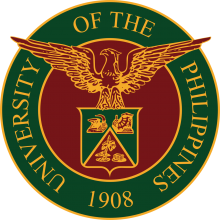
16 Jan 2007
A study on the memory of a group of Filipinos shows that a deeper level of processing, or semantic processing, in a person’s memory has a significant effect on explicit memory or the intentional recollection of past events or experiences.

14 Jan 2007
Summaries of newsworthy papers from Nature and the Nature Research Journals that will be published online on 14 January 2007. Sizing up stem cells, Maintaining immune regulation, and Getting things into cells with the aid of small molecules.

10 Jan 2007
Toluene, a commonly abused toxic compound, is shown to stimulate dopamine release in specific regions of the rat brain known as drug reward pathways, according to research published online in Neuropsychopharmacology this week.

07 Jan 2007
Astrophysics: Dark matter mapped, Cancer: Enzyme double act evades drug therapy – Nature, A new source of stem cells – Nature Biotechnology, Population-specific differences in gene expression – Nature Genetics

05 Jan 2007
Join journalists and science communicators from around the world when we meet in Melbourne, Australia from 16 to 20 April 2007 to discuss the big issues facing science journalism.

31 Dec 2006
Summaries of newsworthy papers from Nature Research Journals include New breast cancer susceptibility gene identified, Evidence for a stem cell origin of cancer, Genetic risk factor for Crohn disease found and Tolerating the gut
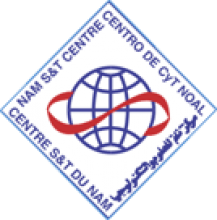
31 Dec 2006
If properly exploited with the modern tools of science, the developing countries can increase their foreign exchange considerably from exports of products from medicinal plants and can also provide modern healthcare to the entire section of the vast rural population of these countries.

24 Dec 2006
Summaries of newsworthy papers published online in Nature and the Nature Research Journals on 24 December 2006. Including: New genetic cause of an immunodeficiency syndrome found and New streptococcal virulence factors.

20 Dec 2006
Summaries of newsworthy papers published in Nature on 21 December 2006. Including: Fortnightly tidal oscillations in Antarctic ice stream flow, Starve the tumour, sabotage the blood supply, Gamma-ray burst defies classification, Parasite conundrum solved?, Progeria mutation sheds light on normal ageing, Female meerkats get their claws out ...
Researchers
Sorry, no researchers coming up for this topic.
- « first
- ‹ previous
- 1
- 2
- 3
- 4
Giants in history
Michiaki Takahashi (17 February 1928 – 16 December 2013) was a Japanese virologist who developed the first chickenpox vaccine.
Irene Ayako Uchida’s (8 April 1917 – 30 July 2013) strides to understand genetic diseases such as Down syndrome paved the way for early screening of chromosomal abnormalities in foetuses.
Baron Kitasato Shibasaburo (29 January 1856 – 13 June 1931) was a Japanese physician and bacteriologist whose work led to a new understanding of preventing and treating tetanus, diphtheria and anthrax.
Maggie Lim (5 January 1913 – November 1995) was a Singaporean physician who promoted family planning and expanded the access to clinics to improve the quality of life for mothers and children in Singapore’s early days.
By isolating soil microorganisms and studying the compounds they produce, Satoshi Omura (born 1935) discovered almost 500 organic compounds with unique properties that were produced by these microorganisms, including many new antibiotics.
The founder of the Adyar Cancer Institute in India, Muthulakshmi Reddy (30 July 1886 – 22 July 1968), fought to uplift women and girls from impoverished situations.
Chinese-American virologist and molecular biologist Flossie Wong-Staal (27 August 1946 – 8 July 2020) was the first scientist to clone HIV and determine the function of its genes.
Maharani Chakravorty (1937 – 2015) was one of India’s earliest molecular biologists whose research paved the way for advances in the treatment of bacterial and viral infections.
Archana Sharma (16 February 1932 - 14 January 2008) conducted research into plant and human genetics that expanded the understanding of both botany and human health. In relation to botany, she uncovered the means by which asexually-reproducing plants evolve into new species.
The first Thai woman to receive a degree in medicine, Margaret Lin Xavier (29 May 1898 – 6 December 1932), is best remembered for her compassion towards her less privileged patients.
In 1915, pathologist Katsusaburo Yamagiwa and his research assistant Koichi Ichikawa became the first to prove that chronic exposure to chemicals can cause cancer.
In 1915, Koichi Ichikawa along with pathologist Katsusaburo Yamagiwa became the first to prove that chronic exposure to chemicals can cause cancer.
Husband and wife team, Kimishige (3 December 1925 – 6 July 2018) and Teruko Ishizaka (28 September 1926 – 4 June 2019) discovered the antibody class Immunoglobulin E (IgE) that triggers allergic reactions. They also discovered that IgE antibodies attach to white blood cells, known as mast cells, releasing histamine, which causes allergic reactions.
Husband and wife team, Kimishige (3 December 1925 – 6 July 2018) and Teruko Ishizaka (28 September 1926 – 4 June 2019) discovered the antibody class Immunoglobulin E (IgE) that triggers allergic reactions. They also discovered that IgE antibodies attach to white blood cells, known as mast cells, releasing histamine, which causes allergic reactions.
Japanese chemist Takamine Jokichi (3 November 1854 – 22 July 1922) founded the Tokyo Artificial Fertilizer Company, where he isolated a starch-digesting enzyme (named takadiastase) from the fungus Aspergillus oryzae.
Ground-breaking cancer researcher Kamal Jayasing Ranadive (8 November 1917 – 11 April 2001) advanced the understanding of the causes of leukaemia, breast cancer and oesophageal cancer through the use of animal models. She was also among the first to recognise how susceptibility to cancer is linked to tumour-causing interactions between hormones and viruses.
The research of Filipino pharmaceutical chemist Luz Oliveros-Belardo (3 November 1906 – 12 December 1999) focussed on essential oils and other chemicals derived from native Philippine plants.
Thai physician and conservationist Boonsong Lekagul (1907 – 1992) made major contributions to the preservation of his country’s wildlife.
Indian scientist and physician Upendranath Brahmachari (19 December 1873–6 February 1946) is best known for creating a drug called Urea Stibamine, used to safely and reliably treat visceral leishmaniasis (or Kala-azar), a severe infection caused by the Leishmania parasite.
Filipino chemist and pharmacist Manuel A. Zamora (29 March 1870 – 9 July 1929) is best remembered for his discovery of the tiki-tiki formula to combat beriberi, a disease caused by Vitamin B1 deficiency.
Korean parasitologist Seung-Yull Cho (16 November 1943 – 27 January 2019) is remembered largely for his pioneering works to control infections caused by helminthic parasites and his contribution to journal publishing.
Fe Villanueva del Mundo (27 November 1911 – 6 August 2011) was a Filipina paediatrician who founded the Philippines’ first paediatric hospital.
After witnessing death and suffering as a youth in his home village during World War II, Nguyễn Tài Thu (6 April 1931 – 14 February 2021) set his sights on alleviating pain by becoming a doctor. After studying Traditional Chinese Medicine in China in the 1950s, Thu returned to Vietnam to serve in military hospitals. Eventually, he became the country’s foremost practitioner of acupuncture, a technique he first learned by inserting needles into himself.
Minoru Shirota (April 23, 1899 – March 10, 1982) was a Japanese microbiologist who invented the popular fermented drink Yakult.
Wu Lien-teh (10 March 1879 – 21 January 1960) was a Malaysian-born doctor who invented a mask that effectively suppressed disease transmission. Winning the prestigious Queen’s Scholarship enabled Wu to become the first Chinese student to study medicine at the University of Cambridge.
David T. Wong (born 1936) is a Hong Kong-born American neuroscientist who is best known for discovering the antidepressant drug fluoxetine, better known as Prozac.
Indian organic chemist Asima Chatterjee (1917 to 2006) studied the medicinal properties of plant products, especially compounds known as vinca alkaloids.
Chika Kuroda (24 March 1884 – 8 November 1968) was a Japanese chemist whose research focussed on the structures of natural pigments.
Umetaro Suzuki (7 April 1874 – 20 September 1943) was a Japanese scientist best remembered for his research on beriberi, a disease caused by vitamin B1 deficiency, characterized by limb stiffness, paralysis and pain.
Salimuzzaman Siddiqui (19 October 1897 – 14 April 1994) was an artist and chemist from Pakistan whose research focused on natural products from plants.
Barry Paw (29 August 1962 – 28 December 2017) was a biologist and oncologist who discovered several novel genes and their functions in red blood cells.
Syed Qasim Mehdi (13 February 1941 – 28 September 2016) was a Pakistani molecular biologist who was a founding member of the Human Genome Diversity Project (HGDP), which assessed human diversity by studying human migration, mutation rates, relationships between different populations, genes involved in height and selective pressure.
Tsai-Fan Yu (1911 – 2 March 2007) was a Chinese-American physician and researcher who was the first female full professor at Mount Sinai School of Medicine. She discovered that gout, a condition characterized by the painful inflammation of joints, was caused by elevated levels of uric acid in the bloodstream.
Min Chueh Chang (10 October 1908 – 5 June 1991) was a Chinese-American biologist who studied fertilization in mammalian reproduction.
A Japanese surgeon, Tetsuzo Akutsu (20 August 1922 – 9 August 2007) built the first artificial heart capable of keeping an animal alive.
Ogino Ginko (3 March 1851 – 23 June 1913) was the first registered female doctor to practise modern medicine in Japan.
Esther Park (1877-1910), born Kim Jeom-dong, was the first female Korean physician to practise modern medicine in Korea and trained the first generation of Korean female doctors.





